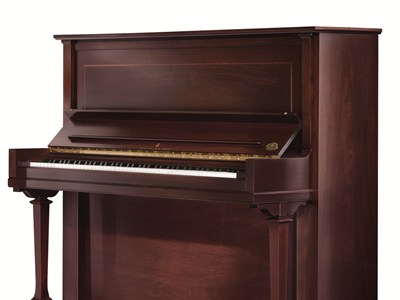Test Your Knowledge of Upright Pianos

Few things are more engaging than a handful of interesting facts to give you some insight into a given topic. Well, what do you know about upright pianos? In Melbourne, Prestige Pianos and Organs has served their customers for four decades, providing guidance on how to purchase pianos and educating customers on the ins and outs of owning and caring for pianos. Now, it is time to test your knowledge of upright pianos with these 9 quick facts.
Click this link for more information.
Did you know…
1.The upright piano was invented by Sir John Isaac Hawkins, an English-born minister-turned-civil engineer who migrated to the Americas in the late 18th century. Hawkins invented then patented the design of what he called the "portable grand piano," which was a modification of the traditional grand piano. His original intent was to create a design for the piano that was a more efficient use of space.
2.The average upright piano likely stands somewhere between 109cm to 131cm tall.
3.The strings on the upright piano run vertically instead of horizontally as with traditional pianos. Not only that, but the keyboard on an upright piano is elevated and designed to run perpendicular to the strings.
4.Upright pianos do have strings and are therefore technically stringed instruments. However, pianos, because of the striking of the hammer, are actually considered percussion instruments. While pianos are somewhat of a hybrid between stringed instruments and percussion instruments, you will find them over in the percussion section of the orchestra.
5.There are over 10,000 parts in an upright piano. Surprise! Surprise! Most of them are moving parts.
6.Most piano shells today are made of wood. The strings are made of steel and they keys, though largely referred to as ivory, are only ivory in color. The keys are actually made of plastic. When Hawkins first made his upright pianos, they were encased in iron with iron strings and iron framing.
7.There are literally tens of millions of pianos in homes around the world, many of which are upright pianos.
8.Some pianos have a hard time staying in tune. Contributing factors for upright pianos not staying in tune can be fluctuations in temperature and humidity. Wood absorbs moisture and expands. When the air is dry, the wood shrinks. Temperature changes is a prime factor in recommending that upright pianos are professionally turned at least twice a year.
9.Scaled down models of upright pianos went into production as toy pianos for children as early as the mid-19th century. These pianos were originally made of wood. Today, toy pianos are often uprights and grand models and they are made of either wood or plastic.
There you have it. Nine quick facts about the piano that can educate novice pianists as well as provide a bit of whimsy for a more seasoned and knowledgeable user. Next time you are checking out upright pianos, which fact do you think with spring to mind first? You may be surprised.
Check out the best pianos
for sale in Melbourne here.








